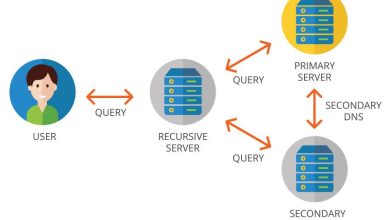Disaster Recovery as a Service (DRaaS): What You Need to Know
Disaster Recovery as a Service (DRaaS): What You Need to Know
In today’s fast-paced digital landscape, businesses are increasingly reliant on technology to succeed. With the potential for data loss due to cyberattacks, natural disasters, or hardware failures, Disaster Recovery as a Service (DRaaS) has emerged as an essential strategy for safeguarding crucial business data.This article will delve into what DRaaS is, its benefits, practical tips for implementation, real-case scenarios, and much more.
What is Disaster Recovery as a Service (DRaaS)?
Disaster Recovery as a Service (DRaaS) is a cloud computing strategy that provides backup, recovery, and continuity solutions for organizations in the event of a disaster. DRaaS enables businesses to replicate and host physical or virtual servers in a third-party cloud surroundings. This allows for swift recovery of data and applications, minimizing downtime and ensuring business continuity.
Key Features of DRaaS
- Cloud-based Solutions: DRaaS solutions are hosted in the cloud, allowing swift access and recovery of data.
- Automated Backups: Many DRaaS providers offer automated backup and recovery services,reducing human error and improving efficiency.
- Scalability: DRaaS solutions can easily scale as business needs grow, accommodating changing data storage requirements.
- Cost-effectiveness: Organizations can save on the costs of maintaining physical disaster recovery sites.
- 24/7 Monitoring: Continuous monitoring of systems and data ensures immediate response in disaster scenarios.
Benefits of Disaster Recovery as a service (DRaaS)
Implementing DRaaS offers numerous advantages for organizations of any size. Here are some meaningful benefits:
1. Enhanced Data Security
DRaaS solutions come with advanced security protocols to protect sensitive data during transmission and storage, making it a safer option than traditional backup methods.
2. minimal Downtime
With DRaaS, businesses can expect quicker recovery times, often from minutes to a few hours, depending on the solution and the complexity of the systems involved.
3. Cost Savings
By utilizing DRaaS, businesses can save on the costs associated with maintaining their own backup sites and equipment while benefiting from predictable monthly pricing models.
4. Compliance and Regulatory Needs
many organizations are subject to industry regulations regarding data preservation and availability. DRaaS can help meet these compliance requirements with proper data handling and security measures.
5. Improved Flexibility and Scalability
DRaaS allows organizations to scale their services based on real-time needs, enabling better efficiency and resource management without the need for constant physical upgrades.
Choosing the Right DRaaS Provider
Selecting the right DRaaS provider is critical for ensuring the success of your disaster recovery strategy. Here are key factors to consider:
- Reliability: Evaluate the provider’s uptime record and support capabilities.
- Service Level Agreements (slas): Understand the terms, particularly concerning recovery time objectives (RTO) and recovery point objectives (RPO).
- Technology and infrastructure: Ensure the technology used aligns with your existing IT environment.
- Customer Support: Look for providers that offer 24/7 support and technical assistance.
- Pricing: Consider the cost structure to ensure it fits within your budget.
Practical Tips for Implementing DRaaS
Accomplished draas implementation requires thoughtful planning and execution. Here are actionable tips:
1. Assess Your Business Needs
Understand what data, applications, and systems are critical to your business functions. This will help you prioritize what needs to be backed up and recovered first.
2.Define RTO and RPO
Clearly define your Recovery Time Objective (RTO) and Recovery Point Objective (RPO). These metrics will guide your backup strategy and help you choose the right DRaaS provider.
3. Regular Testing and Updates
Regularly test your disaster recovery plan and update it as needed. Conducting drills can help ensure all team members are familiar with their roles during a disaster.
4. Train Your Staff
Ensure your team understands how to utilize the DRaaS solution and is equipped to react in a crisis effectively. Training sessions can be beneficial.
5. Monitor and Review
Continuously monitor your DRaaS systems and review your disaster recovery plan to incorporate any changes in your business environment or technology.
Case Studies: Real-World Examples of DRaaS Success
Let’s take a moment to explore some real-world examples where businesses successfully implemented DRaaS solutions.
| Company | Industry | Challenge | DRaaS Solution | Outcome |
|---|---|---|---|---|
| Tech Innovations Inc. | Information technology | Frequent server outages | Cloud-based DRaaS implementation | 95% reduction in downtime |
| HealthCare Plus | Healthcare | data compliance issues | Regulatory-compliant DRaaS solution | Successfully passed audits |
| E-commerce Store X | Retail | Loss of sales during outages | Multi-site cloud DRaaS architecture | Increased customer satisfaction |
First-Hand Experience: A DRaaS Journey
As a technology leader in a growing business, I experienced the transformation that DRaaS brought to our operation. Initially, our data backup strategy was a mix of physical and cloud methods. The unpredictability of hardware failures and lengthy recovery processes significantly affected our operations. We faced a significant outage that brought our services to a halt. This experience underscored our need for a robust disaster recovery plan.
After researching various DRaaS providers, we decided to partner with a vendor that catered to our industry’s specific needs. The onboarding process revealed the importance of establishing a well-documented DR plan. Our team conducted numerous recovery drills,and within months,we experienced a major IT failure. thanks to our DRaaS provider, we managed to restore all operations within an hour. it was a pivotal moment for our business, highlighting the value of investing in DRaaS.
Conclusion
Disaster Recovery as a Service (DRaaS) is an invaluable solution for businesses looking to protect their data, minimize downtime, and ensure uninterrupted operations in the face of adversity. By understanding its features, benefits, and practical implementation steps, you can effectively safeguard your organization against potential threats. Whether you’re a small business or a large enterprise, investing in DRaaS is a strategic decision that can enhance your resiliency and peace of mind.
As technology continues to evolve, having a robust disaster recovery strategy in place can mean the difference between thriving and merely surviving in today’s competitive landscape. Take the first step toward securing your data and business continuity through the power of DRaaS.



